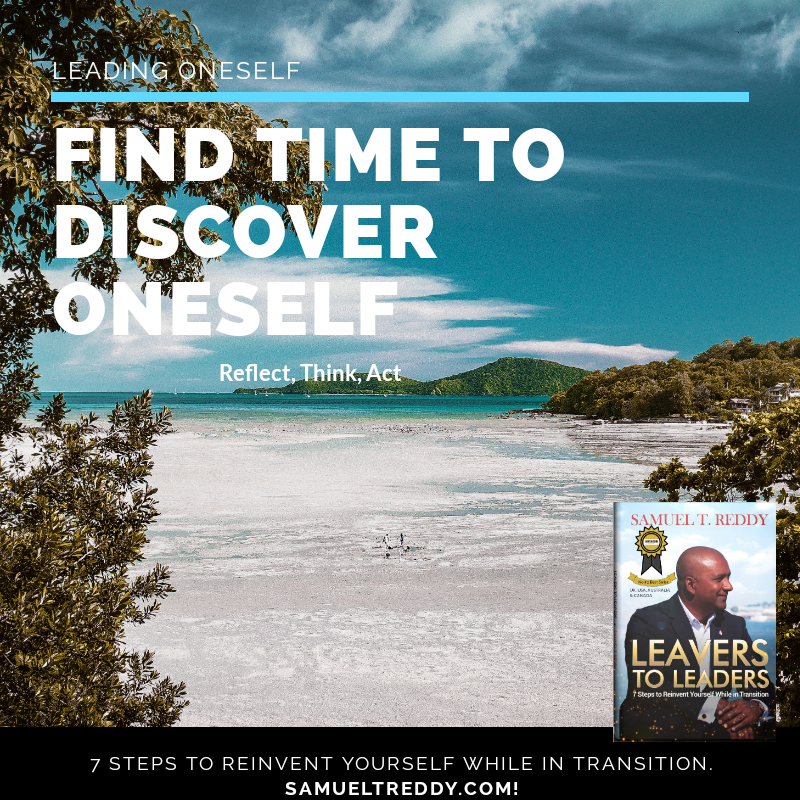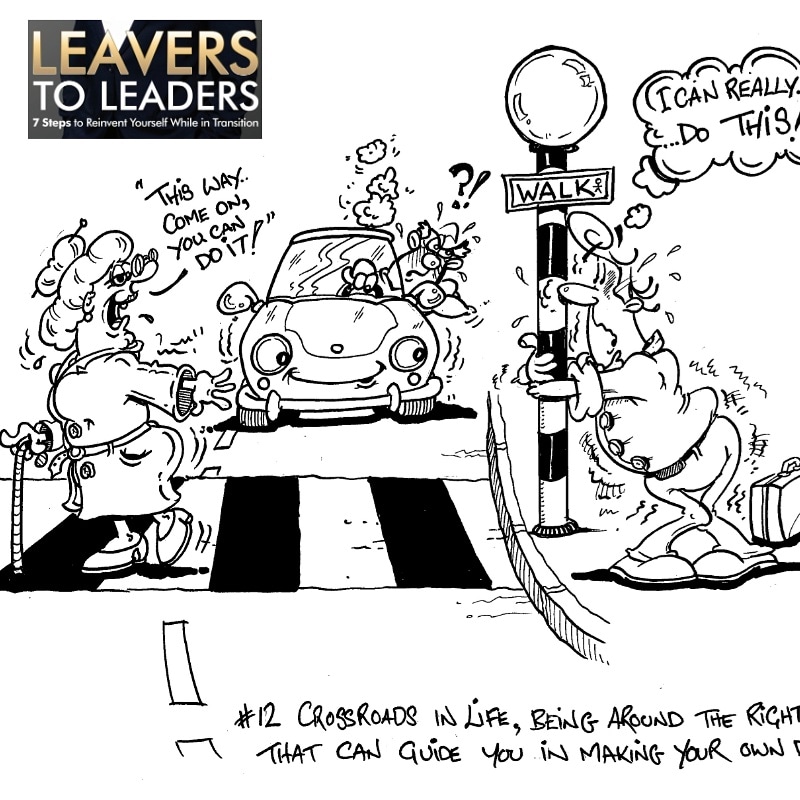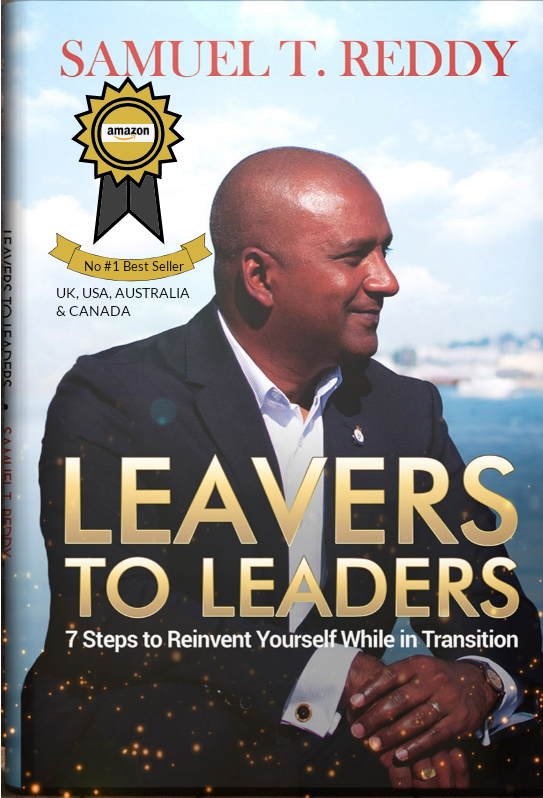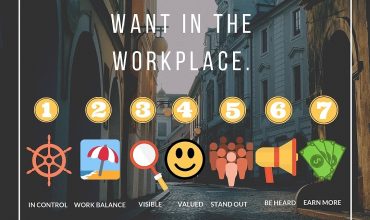
Career changes are common, and can be terrifying. But there are ways that can help make the experience easier to manage.
So before you make the leap for a career transition, take a deep dive and seriously reflect on why you no longer like your current career. Have you hit a glass ceiling and grown bored as a result? Did you realize that you’d rather work for yourself as opposed to someone else? Do you need to transition away from a corporate life so you can take care of your own family and health? Or you just need a change in your life; you just need something different.
Make no mistake, there is a glass ceiling in many organisations and industries. Acknowledge that, but then it’s up to you to work to achieve your goals. Never assume you can’t get to a certain level just because of your gender or race. Go into every situation thinking you can succeed – just have your eyes open. If you do run into a glass ceiling, deal with it as best as you can. We will talk more about dealing with glass ceiling in my next blog.

Consultancy firm, Deloitte, conducted
a study of the future of London in the face of technology. The study, called
Agiletown, looked at a few major industries including: transport, education,
skills, infrastructure, retail work and place. This study reveals that some
jobs are more at risk than others. For example, the report says that the jobs
more at risk are in administrative support, sales, construction and manufacturing.
The jobs least affected by automation are in skilled management, such as
financial services, art and media, healthcare, legal services, community
services and education.[1] The
report goes on to say that people in London earning around £30 000 are more likely
to be replaced by automation than those earning £100 000. This means almost 35%
of UK jobs are at risk and can be replaced by computers.
In the United States, according to an Oxford University study, 47% of the total workforce is at risk due to computerisation, and many jobs can be replaced by technology or automation[2]. They are referring mostly to manual or low-skilled work requiring physical labour. The study shows that as many as 140 million full-time workers could be replaced by advanced algorithms.
The World Economic Forum in its report reveals that by 2022, around 54% of the workforce will need to reinvent themselves or invest in reskilling.
We have already seen technology replacing humans even in the world of fashion, which is generally thought to be a human-driven environment – such as a catwalk using VR technology in 2016 in London. This wasn’t so much about capturing and replicating an experience – more about transporting users by creating one layered over the real world. Attendees to emerging London designer Martine Jarlgaard’s show, wore Microsoft HoloLens headsets to see the full spring/summer 2017 collection coming to life in the form of holograms in front of them, so everyone could explore the collection from all angles.[3] This provided fans with a fully-immersive version of a classically-flat live stream experience – enabling them to feel as though they were sitting in the front row. If you are to be a leader in the workplace, you cannot ignore such research. It`s almost guaranteed that you won`t be in your current job for the remainder of your working life. No matter how hard you work, how many hours you work a week, how well you get on with your boss, how many fantastic ideas and projects you have launched, how much revenue you bring into the company, your days as an employee in any particular industry are numbered.
My dad worked in one job for thirty-one years until he passed away at the age of forty-nine. Statistics used to say that you would change your job at least seven times in your lifetime. New research is suggesting that by the time you are thirty, you will have had seven careers. Whether you work for a global company, SME, or small business, your ability to succeed depends on how you position yourself as a leader.
You will get paid by the amount of value you add to the workplace.

Your current job is also the best place to gain credibility while getting paid. It is the perfect place to figure out where you want to go and develop new skills that might help you succeed in your dream occupation, whatever that might be. As an entrepreneurial leader, you need to see your current employer not just as your client but also as your business. Work effectively and just plain hard for your business. As an entrepreneurial leader, you also need to be constantly looking for the next dream contract. Eventually, you will become headhunted for the next big job.
In Leavers To Leaders, I have developed a programme to help you understand your leadership journey with 14 questions and you get a customised report, find out more.

During my research for leavers to leaders, I interviewed Hannah, 35 years old and working in the care industry. She used to help us when we had our small care business right after I left the military. During the interview, she was very keen to let me know that she is now a team leader and has four teams working for her. As we slowly switched the conversation on to her future aspiration and goals, she soon realised that some of her skills can also be used in the hospitality industry. Although she has lots of qualifications in the care industry, she would be better off if she had some leadership qualifications which would leverage her skills across any industry.
As we move into the digital world, according to the World Economic Forum, by 2020 5.1 million jobs will be disrupted and lost due to the technology trend around the world, and it is already happening[4]. We can now walk into Sainsbury’s and pick our food and, pay at an automated checkout without having to have any human interaction. I have the same experience when I book my flight, print my tickets, walk into the terminal, check my bags, go through a security scanner and board my plane. It is already happening and we don’t need to wait for advanced robots to come around, we can see or imagine automation. So how do you make the most of this development. How do you become a leader in your field or any field of your choice? This is where the power to reinvent yourself comes in.

Now, being born in Mauritius, a tropical island surrounded by ocean, one thing I am a great fan of are lobsters, and perhaps the lobster analogy is the best one to help you understand how to reinvent yourself. Lobsters are part of the crustacean family. They have a hard exoskeleton shell that protects them, while also containing them. A lobster de-shells 20 to 30 times in its life, and each time the deshelling takes place, the lobster is exposed. It is at risk of being eaten and picked at by all the other sea creatures. The formation of a new shell takes about 10 days.
In the life of a lobster, this is a hell of a time, and during that time the lobster is out of its comfort zone. The lobster has to be comfortable being uncomfortable in order to grow and be this majestic creature. Each time it leaves the old shell behind, the flesh is exposed to other prowlers of the sea. But it is also very interesting, as any part of its limbs which are missing, including its eyes and antennae, are regenerated. In order to be a leader beyond 2020, you need to reinvent yourself all the time, taking more risk and stepping out of your comfort zone. Of course, a lot of people will pick at you, and you also need to be comfortable with that.

So, be a lobster and take on new challenges and learn new skills.
Go into every situation thinking you can succeed – just have your eyes open. If you do run into a glass ceiling, deal with it as best as you can.
Doing this self-evaluation upfront will help ensure that you make the right decision. Whatever the reason, you just need ensure you are moving up in your career.
So have a strategy and a plan you so can be ready, and it doesn’t have to be a scary as it sounds. So reflect, think & act.

My name is Samuel T. Reddy, my whole life has been about transition. Mauritian born , my career started out in the local government and proceeded with a career in the British Armed Forces. During my service in the military I transition three times from a front line soldier to a military linguist. TriExForces is a learning & development company specialising in developing leaders in transition due to change in the workplace.
I would love to hear your thought on the above, feel free to connect with me on LinkedIn or Facebook or follow me on twitter or instagram.
Best regards,
SamuelTReddy.com
Best Selling-Author of Leaver To Leaders, CEO of TriExForces.
[1] https://www2.deloitte.com/content/dam/Deloitte/uk/Documents/uk-futures/london-futures-agiletown.pdf
[2]https://www.oxfordmartin.ox.ac.uk/downloads/academic/The_Future_of_Employment.pdf
[3] https://www.theguardian.com/media-network/2016/sep/23/tech-fashion-week-burberry-tommy-hilfiger-virtual-reality
[4] http://www3.weforum.org/docs/WEF_Future_of_Jobs.pdf
#leaverstoleaders #career #careerchange #transition #business #entrepreneurs




